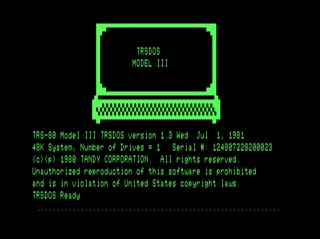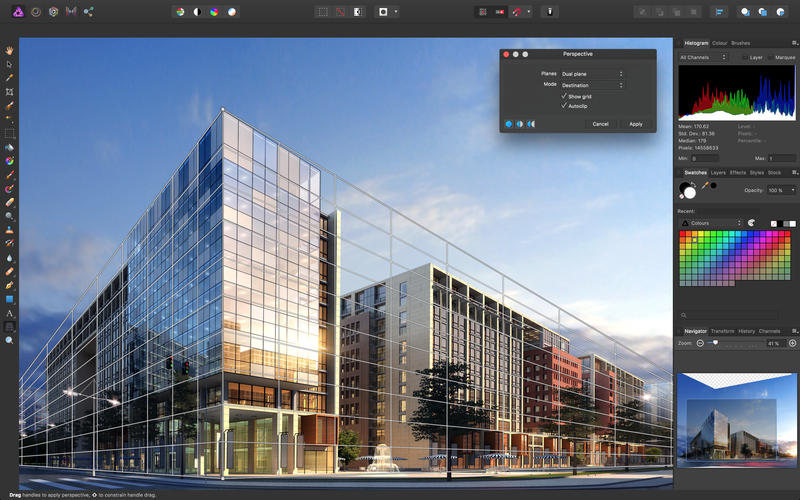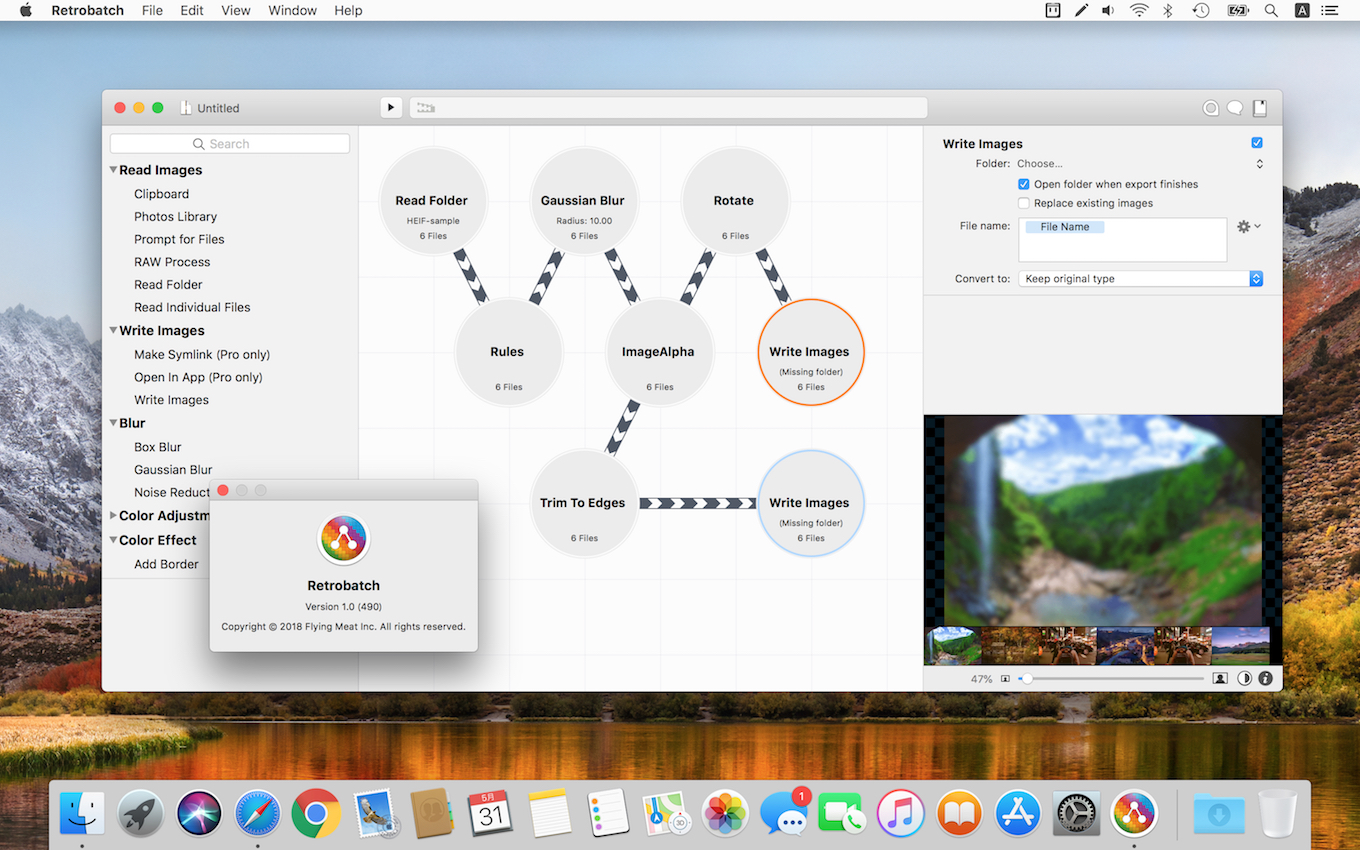Retrobatch Mac cracked version – is a powerful image batch manipulation Mac cracked app, in fact There are many excellent image batch processing tools on the Mac platform, but this Retrobatch is obviously more comprehensive. The Mac cracked app provides batch watermarking, cropping, compression and other functions, and the processing speed is very fast. Droid vpn premium account 2018. Retrobatch 1.4.3 serial numbers are presented here. No registration. The access to our data base is fast and free, enjoy.
- Flexible, super charged, batch image processing for your Mac. More info download. About Flying Meat Find out who we are, where the name comes from, and what makes us different. Online Store Buy our wonderful products. Support & Contact Lost a serial number, need to.
- November 13, 2020 First up, I released Retrobatch 1.4.3 this morning as a Universal Binary, meaning it will run natively on the new Apple Silicon Macs. There are also a couple of bug fixes, features, and compatiblity fixes for MacOS 11 Big Sur. It's just like the version of Retrobatch on Intel Macs just you know, for Apple Silicon now.
- Description of Retrobatch 1.4. Retrobatch 1.4 Flexible, super charged, batch image processing for your Mac. A node based batch image processor means you can mix, match, and combine different operations together to make the perfect workflow.

Retrobatch is the name of my new MacOS app, and it's in public beta right now.
Retrobatch is a node based (not the JS language) batch image processor. A bit like Quartz Composer, and a bit like Audio Hijack. But for images. Lots and lots of images (or maybe a few or even one).
For years, people have wanted me to add batch processing of some kind to Acorn. It's been possible to automate things with JavaScript or AppleScript or Automator in Acorn, but it's never been super easy to set up and you needed to know a bit of programming to get anything really useful done. So I always had ideas in the back of my head for what it would look like.
But to do it right, it would need to be a new app. And then sometime late last summer, I decided it was time and I started working on Retrobatch.
But why node based? Every batch image processor I've come across was linear. You put images in one end, and out they came the other side. But that's so limiting! What if it was possible to take a folder of images and then operate on them twice with the same workflow? What if you could create branches where one would resize images to 50%, and another write out PNG files with the @2x suffix added to the file name? What if you had a workflow that referenced multiple folders which combined into a single output?
And all the possibilities! What if you could read an image from the clipboard, apply a filter to it, and write it to a folder and to the clipboard? What if you had a way to separate out PNG images of a certain size from a folder and only do an operation to those? What if you could script the application in response to new images being added to a shared folder? What about if it could capture all the open windows of your favorite application as images, then apply a filter to those, and then write out a layered PSD of those windows? What if you wanted to apply a machine learning model against your images, to figure out which contains pictures of hotdogs in them, and then perform some action based on that?
There's like, a trillion possibilities. Probably more. Beta testers have been surprising me with interesting workflows.

James pearce russia twitter. Anyway, you can do all that with the Retrobatch beta today with a free trial.
When it finally hits 1.0, fingers crossed, there will be two versions of Retrobatch- Regular and Pro. Pro will have all the nodes you see today, including advanced features such as machine learning, changing bit depths and color profiles, processing with AppleScript and shell scripts, rules, and advanced metadata entry. The Regular version will allow you to do the basics like cropping, resizing, watermarks, and so on. And there will be two prices as well. But right now, while it's in beta, you can purchase Retrobatch Pro at a reduced price.
Charging for a beta app? Yep- Retrobatch is very useful in its current state and people have been wanting to give me money already. So who am I to argue? In addition to that, bundles are back at the Flying Meat webstore. If you purchase multiple copies of Retrobatch, or a copy of Retrobatch and Acorn, or any of the above, you'll get a nice discount.
Retrobath Makeover Reviews
So go grab a beta copy of Retrobatch and send us feedback to help shape what it looks like in the future, or chat about it in the new Retrobatch forums. Pixlr-o-matic.
And finally, here's a quick video showing off a workflow for making @1x and @2x images with Retrobatch.
Version 1.2:

Retrobath Nj
- New Animated Image node, which will allow you to make animated GIF or PNGs.
- Droplet support! Use the File ▸ Save As Droplet… menu item to write out your workflow as an application, which you can then drag and drop folders and images on to run your workflow. To re-edit a workflow contained in a droplet, you can either hold down the Option key when opening the droplet, or drag and drop the droplet onto the Retrobatch app icon.
- New Set Finder Tags node, which can assign one or more tags to images in the Finder (Pro only). This will work on the image that was most recently written- so you don't need to write out a copy of an image to set it. You can instead have a Read node, and then a Set Finder Tags right after it and Retrobatch will then set the tags on the original files.
- The Clipboard node got some improvments:
- It will now notice when a new image shows up on the clipboard, and update the preview accordingly.
- If you copy a file in the Finder, it'll now use that file on disk to process through any following nodes.
- New preferences for sending out a notificaiton when a workflow ends, as well as playing a sound.
- The Watermark node now has a 'File Number' token, which is the image number being processed.
- The Shell Script node has a new field where you can enter arguments to the selected script. Arguments are separated by spaces.
- New 'Round Corners' node.
- New 'Limit' node which will limit the number of images or PDFs allowed to pass through (Pro only).
- New 'Image Grid' node.
- New option for the Write Images node, which enables to you write your processed images back to the original image it came from.
- New template 'Classify and Set Keywords' which uses Machine Learning to figure out what's in the image, and sets the metadata keyword based on what it found.
- New 'Page Number' rule in the Rules Node. You can use this rule to say 'only let the first page of a PDF through', or 'all pages of an animated GIF except the first', or even limit images 5 though 16.
